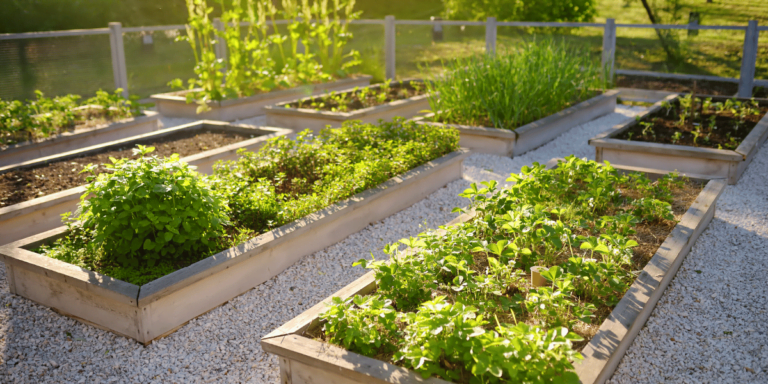Introduction
The Orchid, predominantly from the Phalaenopsis species, is an exquisite flower often synonymous with grace, luxury, and elegance. Native to tropical climates, these indoor beauties have captivated the hearts of plant enthusiasts the world over. This review aims to shed light on the care and nuances of maintaining an Orchid, ensuring it remains a radiant centerpiece in your indoor garden.
Orchid (Various species, often Phalaenopsis) Indoor Plant Details
| Specification | Details |
|---|---|
| Common Names | Moth Orchid, Phal |
| Botanical Name | Phalaenopsis spp. |
| Family | Orchidaceae |
| Plant Type | Perennial, Epiphytic |
| Mature Size | Varies by species, often 1-2 feet in height |
| Sun Exposure | Bright, indirect light |
| Soil Type | Orchids don’t use regular soil; prefer bark, sphagnum moss, or coconut husks |
| Soil pH | Neutral to slightly acidic (6.0 to 7.5) |
| Bloom Time | Typically winter to spring, but can vary based on care and environment |
| Flower Color | Varies widely – white, pink, yellow, purple, red, and combinations thereof |
| Hardiness Zones | Typically 10-12 for most Phalaenopsis species, but always grown as houseplants in colder zones |
| Native Area | Southeast Asia, Philippines, and Northern Australia |
Plant Care
Orchids are sometimes perceived as high-maintenance, but in reality, with the right knowledge and a touch of passion, they’re relatively straightforward. A balanced combination of light, water, and love will keep your orchid thriving.
Light
When it comes to Orchids, light plays a pivotal role in their growth and bloom cycle. Phalaenopsis Orchids thrive in bright, indirect light. Direct sunlight can be harmful and may cause sunburn on the delicate leaves. If you’re using a windowsill, consider a sheer curtain as a buffer. A pale green leaf color is usually an indicator of the perfect light, while darker leaves may suggest inadequate light, and yellowish, reddened leaves can imply too much direct light.
Soil
Unlike other houseplants, Orchids don’t grow in soil. Instead, they thrive in a loose, well-draining medium. Materials such as bark, sphagnum moss, or coconut husks are ideal. These substances ensure that the orchid’s roots receive the right amount of air and don’t stay waterlogged. Repotting every couple of years, especially when the medium decomposes, is a good practice.
Water
The key to watering orchids is balance. Over-watering can lead to root rot, while under-watering can lead to dehydration. Typically, watering once a week is optimal. However, the frequency can change depending on your environment. It’s best to water in the morning to give your plant ample time to dry before the cooler evening sets in.
Temperature and Humidity
Orchids prefer temperatures between 65°F to 75°F during the day, with a slight drop at night. This variation in temperature aids the plant in its flowering process. Orchids also appreciate humidity levels between 50-70%. If your home is dry, consider placing a humidifier near the plant or setting your orchid on a tray with water and pebbles.
Fertilizer
Fertilizing orchids can boost their growth. A balanced (20-20-20) fertilizer diluted to half strength works wonders. Fertilizing every other week during active growth and less frequently during dormant periods is effective. Remember, it’s always better to under-fertilize than over-fertilize.
Pruning
After the orchid has finished blooming, it’s time for pruning. This encourages the plant to bloom again. Use a sterile tool to cut the spike above a node, or remove it entirely to allow the plant to regain energy. Regularly remove any dead or yellowing leaves to keep the plant healthy.
Overwintering
While indoor Orchids are shielded from harsh winter conditions, they still sense the season. Ensure they get sufficient light, either naturally or artificially, as daylight hours wane. Reduce watering and avoid fertilizing during these months to emulate their natural dormant state.
Propagating Plant
Orchids can be propagated using various methods. The simplest is by division when repotting. Ensure each division has three to four healthy bulbs. Keikis (baby plants) are another propagation method. Once they’ve grown a few roots and are sizable, they can be detached and planted separately.
Quickly Declining
Orchids can sometimes show signs of decline. Dropping leaves, wilting flowers, or a change in leaf color are signs your plant needs attention. Review the care elements mentioned above and adjust as necessary. Most importantly, remember not to panic. With patience and care, orchids can often bounce back.
Types of Orchids
Orchids belong to one of the most diverse families in the plant kingdom, with over 25,000 species and more than 100,000 hybrids. Some popular types include:
- Phalaenopsis Orchids: Often called the “Moth Orchid”, they’re one of the most common houseplants. Their flowers can last for weeks.
- Dendrobium Orchids: Recognized for their tall, slender stems, these orchids are a favorite for cut flower arrangements.
- Cattleya Orchids: Popular for their large, colorful, and fragrant blooms, they’re often used in corsages.
- Oncidium Orchids: Also known as the “Dancing Lady Orchid”, they have multiple small blooms on long stems.
- Miltonia Orchids: Often referred to as the “Pansy Orchid”, they have flat, open flowers reminiscent of pansies.
Common Pests & Plant Diseases with Solution
Pests:
- Mealybugs: Small, white insects that leave a cottony residue. Solution: Wipe with alcohol on a cotton swab or use insecticidal soap.
- Spider Mites: Tiny arachnids that cause yellowing and speckled leaves. Solution: Regularly misting and using insecticidal soap can help.
- Scale: Brown or black bumps on the underside of leaves. Solution: Remove manually or with alcohol-soaked cotton swabs.
Diseases:
- Root Rot: Overwatering can cause the roots to decay. Solution: Trim off affected roots and repot in fresh media.
- Fungal and Bacterial Infections: Manifested by black or yellow spots on leaves. Solution: Isolate the plant, trim affected areas, and ensure proper air circulation.
M. How to Get Orchids to Bloom
Getting Orchids to bloom can be a test of patience. Some tips to stimulate blooming include:
- Light: Ensure that the Orchid is receiving adequate indirect sunlight. Adjust its position if needed.
- Temperature Fluctuation: A slight drop in temperature at night, especially for Phalaenopsis Orchids, can stimulate blooming.
- Fertilize Properly: Using a high-phosphorus fertilizer can encourage blooming.
- Watering: Ensure consistent but not excessive watering.
Common Problems with Orchids
- Yellow Leaves: Could be a result of too much light or natural aging of the plant.
- Drooping or Limp Leaves: Often due to overwatering. Check the roots for signs of rot.
- No Flowers: The plant might be too young, or it might not be receiving the right care in terms of light, temperature, and fertilization.
- Spots on Leaves: Indicative of fungal or bacterial infections. Ensure the plant is not sitting in stagnant water and that there’s adequate air circulation.
In conclusion, Orchids are a testament to nature’s splendor. With patience, understanding, and care, they can be an everlasting source of beauty and joy in one’s home.
Reflections and Recommendations
Orchids, with their ethereal beauty, deserve a place of pride in any indoor garden. Their care might seem intricate initially, but once you get the hang of it, they’re an absolute delight to nurture. Remember, every orchid has its personality—understand it, cater to it, and it will reward you with mesmerizing blooms.
Frequently Asked Questions
Decode the magic of gardens with our guide to Landscaping Styles Frequently Asked Questions.
- Ideally, every 2-3 years or when the potting medium starts to decompose.
- Ensure it’s getting the right amount of light, and consider adjusting its temperature, especially at night. A slight drop can stimulate blooming.
- Yes, but if it’s too hard or contains chemicals, consider using rainwater or distilled water
- This often indicates underwatering or root rot. Check the roots and adjust your watering schedule accordingly.
















